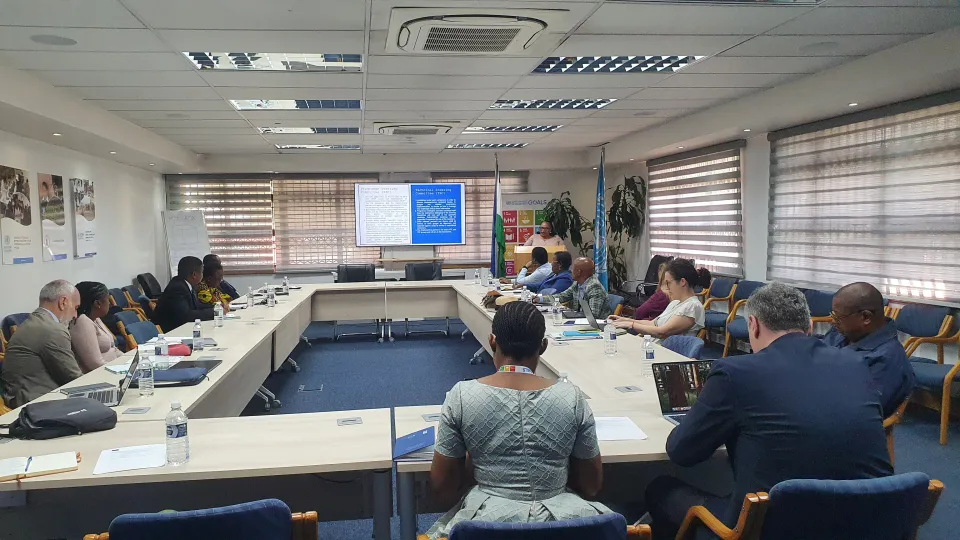Strengthening electoral management in Bosnia and Herzegovina – A test case
All electoral management bodies face challenges when organizing democratic elections. Depending on the context, these may relate to security, political, logistical, financial or other risks. As a result, electoral management bodies (EMBs) are continuously improving practices in order to strengthen their independence, impartiality, integrity, transparency and professionalism, and thus ensure credibility of election results.
Bosnia and Herzegovina’s Central Election Commission (CEC) was quick to adopt International IDEA’s Electoral Risk Management Tool and apply it to the November 2012 local government elections. Although elections in B&H are not prone to violence, following a presentation by IDEA earlier in the year, the CEC expressed interest in exploring how IDEA’s Tool could be used to monitor and analyze electoral processes. In particular, the CEC was interested in collecting information relating to the perceptions of citizens, local election administrators and political parties in the context of the November 2012 local elections.
International IDEA’s Electoral Risk Management Tool is primarily designed to empower EMBs and other state and non-state actors to understand, analyze, prevent and mitigate election-related violence. The Tool is designed to assist EMBs to bring into focus critical aspects of electoral processes and improve their management practices. It can also be applied in situations where election-related violence is not an immediate challenge, like in the case of B&H.
Using the Tool
Three main topics received attention in B&H: the confidence in electoral administration; the confidence in the counting process; and the support for the introduction of electronic voting. The CEC collaborated with the Association of Election Officials of Bosnia and Herzegovina (AEOB&H) to implement the project.
More than 11,000 questionnaires were completed, processed and analyzed using the Electoral Risk Management Tool. The Chief of the CEC’s Election and ICT departments, Ermin Kos, noted: ‘Although this type of tool was not previously used by the B&H CEC, we managed to adopt it quickly. In particular, the Tool enhanced the capacity of the CEC’s analytical section. The exercise provided a valuable opportunity for us to study and better understand specific segments of our electoral processes. In addition to activities envisaged by the project, we identified new areas where the Tool could be utilized. We will continue to rely on it in our future work’.
The International IDEA Electoral Risk Management Tool is integrated into a software application that includes three interactive modules: knowledge resources, analytical instruments, and prevention and mitigation. These can be used in combination or as standalone resources. Each module is flexible enough to allow users to focus on what is relevant in a given country and a particular electoral context.
Since the formal conclusion of the project with International IDEA at the end of 2012, the CEC has continued to make use of the Electoral Risk Management Tool to analyze information relating to out of county registration, complaints and appeals, and invalid ballots among other things. Ermin Kos explains that: ‘Recent analysis, together with the Tool-generated risk maps developed last year, was presented during a post-election conference entitled 2012 Local Elections –
Analysis of the electoral processes, in April 2013.’ Ermin Kos added that ‘the purpose of the conference was to evaluate the 2012 local elections and to propose changes to the B&H election law. These are based in part on either challenges or opportunities identified during the 2012 elections, including through the use of the Electoral Risk Management Tool.’
CEC Commissioner Irena Hadziabdic commented that ‘the project and the use of the Electoral Risk Management Tool proved to be a valuable experience for the CEC.
The CEC came to the general conclusion that the International IDEA Tool is extremely useful for election management with respect to early detection, monitoring and solving emerging risks which may influence or endanger the election process. Also, it is useful for conducting post-electoral analysis. So we will use it again in the future and continue to provide our feedback and development suggestions.’
Next step
Based on CECs recent experiences, International IDEA has been able to further improve the ERMTool’s quality and usability ahead of its public launch in late 2013. According to Sead Alihodzic, IDEA’s Senior Programme Officer, the project in B&H ‘helped International IDEA to better understand the potential for applying the Tool in contexts where elections do not face immediate or high security risks. This pilot confirmed that the ERMTool is an instrument that can improve broader electoral management capacity. The CEC now has the relevant expertise that we can draw upon when building the capacity of other prospective tool users.’
This is the fourth article in a series that illustrates how International IDEA’s Electoral Risk Management Tool is being piloted and tested in four different parts of the world.



